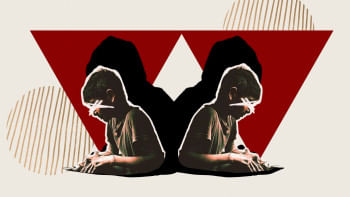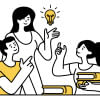Why children’s voices matter in unlocking their full potential

As part of a study on play, two groups of children were asked to practise solving jigsaw puzzles. One group was given a choice of additional puzzles on the floor besides those on the table, with no adult intervention. The other group was informed that there were puzzles they needed to solve, with an adult present, but no interaction occurred. Both groups were given 10 minutes to complete the puzzles and then asked to solve them again. Which group do you think performed better?
The study's first group was free to choose their puzzles, had no adult presence, and could decide where to solve them. Thus, they identified the setting as a playful environment, which gave them the freedom to try new ways to address a problem. The second group, on the other hand, perceived the setting as non-playful due to the adult presence and the site that was dictated to them (the table, in this case). Regarding performance, all children improved after practice, but the playful group went beyond the immediate results. Children practising in the playful environment showed enhanced purposeful creativity, problem-solving skills, persistence, focus, engagement, well-being, and metacognition, i.e. the ability to monitor, control, and reflect on learning and processing information.
But how does one define play? Justine Howard, associate professor in child research at Swansea University and a developmental and educational psychologist specialising in play, describes play as a "process or cycle characterised by children adopting a playful psychological state or approach to a task." Put simply, play is defined by the players themselves. Therefore, the question is: what puts them in a playful psychological state?
Howard illustrates this with a teacher playing with preschool students pretending to drive a bus. When the teacher joined in, asking about the destination, fare, and change for 50 pence, the children gradually lost interest. Although the teacher intended to integrate learning, the children felt she had taken over their activity. Children view activities as playful when they feel they have choice and control (over when, where, with whom, what, and for how long they play), regardless of age and context.
In a study, Howard and her colleagues asked children aged three to six to pose for pictures while engaging in activities like reading, solving puzzles, or group work. In different classrooms, children played a game where they sorted pictures into "play" and "not play" categories by posting them in labelled letterboxes. After sorting, the children explained their choices. They generally did not consider an activity playful if it was done at a table or if an adult was present. Smiling faces in the pictures were more likely to be seen as play. Activities with books and numbers were less likely to be considered play, while outdoor activities were perceived as more playful than indoor ones.
An interesting observation from the study was how children used cues to determine how they would approach an activity. For example, placing a box of Legos on the table or a floor is essentially the same, but children view the activity as play when it's on the floor. Choice also plays a significant role; activities are labelled as play when perceived as voluntary.
Howard compares a child learning in a playful environment to an archer with a quiver full of arrows. When children feel confident and secure, they have many opportunities to hit the target. If they miss, they might even adjust the target, demonstrating innovative problem-solving in a relaxed, choice-driven environment. In a playful state, children are more willing to experiment and take risks. Howard explains, "A small change in their environment and the cues that they are exposed to can have such an impact on children's psychological state that they do much better on the task as opposed to when they are not given that agency."
Conversely, when that agency is taken away, children have fewer arrows in the quiver, and they feel like their opportunities are limited. They are more afraid to take risks and think of innovative ways to address a challenge. Thus, they are more likely to continue with an incorrect action rather than think about it creatively and are less likely to be deliberative or purposeful with their problem-solving. Their behavioural thresholds are heightened, and they become more aware of what they "cannot" do, leading to more rigidity in their actions.
In playful environments, children can retry activities without judgment, building identity and self-confidence. This low-threat environment is why play—a low-cost, sustainable way to support children's mental health and well-being—is so important for every child's development. It reduces their fear and protects their self-esteem, helping them with increased emotional and physical perseverance.
Perceptions of play are embedded in cultural practices. Parents in Bangladesh generally struggle to acknowledge even teacher-led play as an acceptable teaching tool. The more knowledge we have about play and the more evidence there is on its importance, the more convinced parents are likely to be about its impact on children's development. Children obviously have to learn to do certain things at certain ages when it comes to mainstream education, but through play, we can help that learning be more effective by helping them feel safe, make mistakes, and grow within their learning environment.
Upashana Salam is senior manager of communications and knowledge management at the BRAC Institute of Governance and Development (BIGD).
Views expressed in this article are the author's own.
Follow The Daily Star Opinion on Facebook for the latest opinions, commentaries, and analyses by experts and professionals. To contribute your article or letter to The Daily Star Opinion, see our guidelines for submission.

 For all latest news, follow The Daily Star's Google News channel.
For all latest news, follow The Daily Star's Google News channel. 








Comments